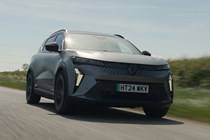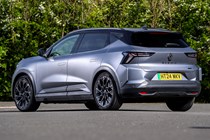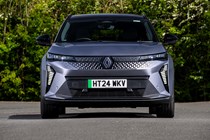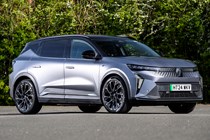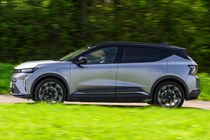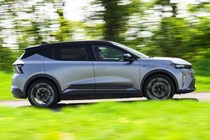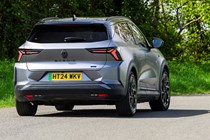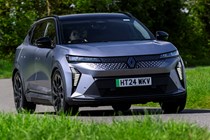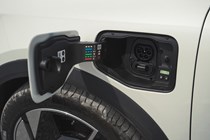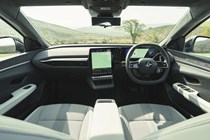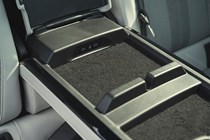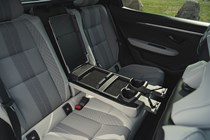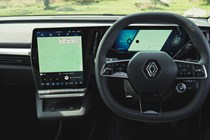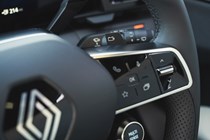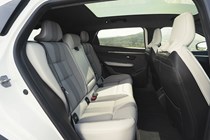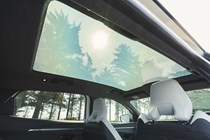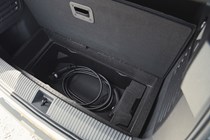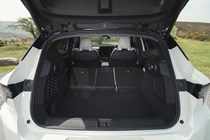
Renault Scenic E-Tech engines, drive and performance
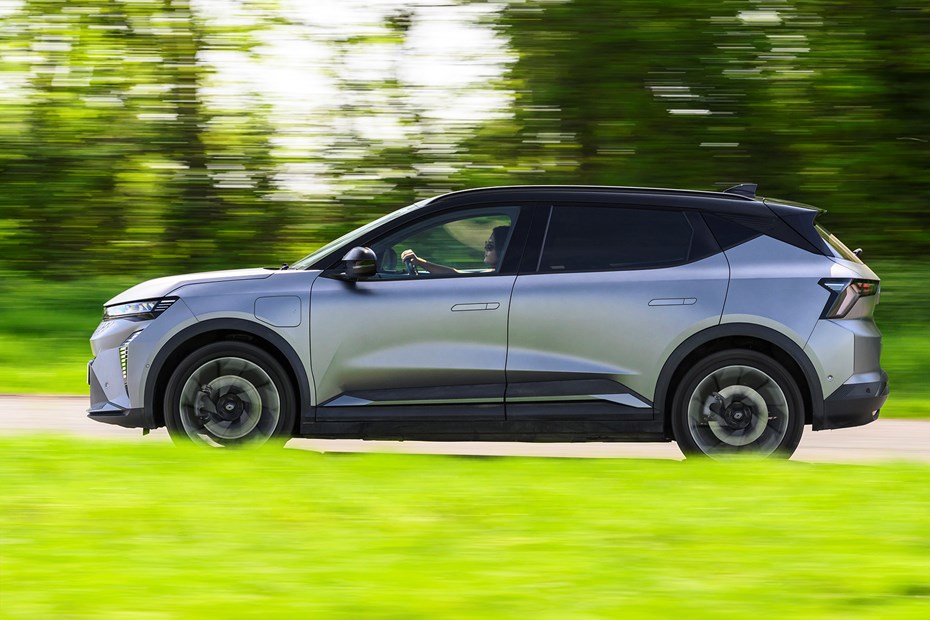
- One motor and battery currently available
- Reasonable acceleration and good range
- 60kWh version previously available
What power options are there?
There are three trims and there were initially two battery sizes. The smaller 60kWh battery came with 170hp on tap; the bigger and now standard battery is 87kWh and delivers 217hp from its motor. What about the all-important range? Even the smaller battery would do a claimed 260 miles on a full charge, while the 87kWh battery goes way further: 379 miles claimed. We’ve never got anywhere near that figure, something we’ll discuss on the next page, but the real-world range was never an issue.
What about the performance? Well, if you’re after neck-snapping acceleration, buy a Tesla Model Y instead. The Scenic accelerates in a much calmer manner, more akin to competitors like the Enyaq. Nevertheless, it’s quick enough in our book. The less powerful 60kWh version hit 0-62mph in useful 8.6 seconds, while the 87kWh that underpins all new Scenics does that sprint in 7.9 seconds. That’s quicker than the Peugeot E-3008 and more than a match for plenty of petrol and diesel rivals, too.
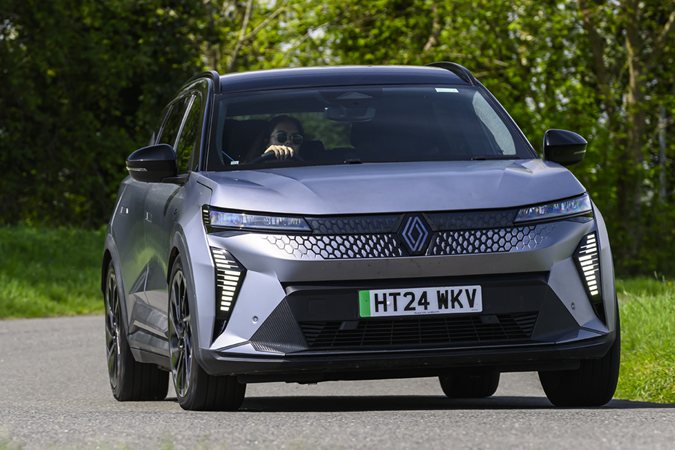
The nice thing is how progressively it accelerates, whether you’re in stop-start traffic or on a country road – where, by the way, there’s enough oomph to overtake slower-moving traffic when required. We rarely wished for more power in the months of driving our long-term Scenic.
What’s it like to drive?
- Light steering, grippy handling
- Impressive ride and damping
- Very quiet at speed
The Scenic is quite lightweight by electric-car standards, and as a result quite satisfying to drive. And by satisfying, first and foremost, we mean the way it goes round corners. Because it’s relatively firmly sprung you don’t feel it leaning excessively in corners, and nor is it overly troubled by a bump in the road mid-bend.
The steering is quite quick once you get past the first few degrees, which makes the Scenic feel agile and eager to turn. It’s also quite light, and if you’re not used to this kind of set-up you might find the way it steers a bit nervous to begin with. After a while you do tend to acclimatise to it, though. If you prefer heavier steering, you can add more weight by pressing the mode button on the steering wheel and selecting Sport.
Speaking of the steering wheel, there are paddles on the back of it to change the regenerative braking effect. The lowest mode basically lets the car freewheel when you take your foot off the accelerator, while the most aggressive mode (there are four in total) slows the car noticeably. A one pedal driving mode that slows the car to a stop when you lift off the accelerator was introduced in 2025. The brake pedal itself isn’t quite as progressive as a Tesla’s, but it’s not bad. It’s still easy enough to stop the Scenic smoothly – and way more smoothly than you can stop some EV rivals.
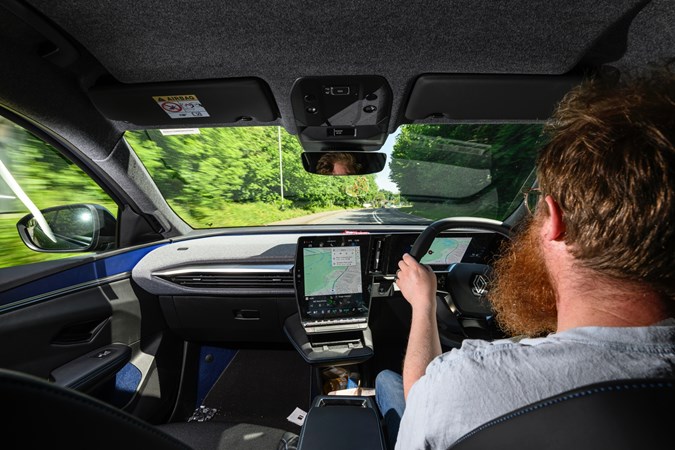
How comfortable the Scenic is rather depends on what surface your driving on. It takes big hits like speed bumps in its stride, and even dispenses with an average pothole without thumping and crashing. Plus, if you’re winding your way along a country road strewn with dips and crests, the Scenic doesn’t float about like some nauseating waterbed on wheels.
That’s all great, then, but it’s not without its challenges. The suspension is so determined to keep everything under control that when you hit Tarmac that’s more akin to a washboard – as in, with lots of little ripples – the ride gets quite giggly and unsettled. In the same vein, you’ll notice it rocking from side-to-side at times on the motorway. These traits aren’t deal breakers, but could be annoying. For something more settled, try out the Skoda Enyaq.
The Scenic is pretty quiet, though. There’s hardly any motor whine under acceleration. In fact, the only time you’ll hear much from the drivetrain is a background hum when you back off and the motor starts harvesting energy to replenish the battery. There’s some wind noise at 70mph but it’s not excessive, and road noise, even on the biggest 20-inch wheels, is only an issue on properly coarse roads. Overall, we’d say it’s one of the quieter cars in its class.


